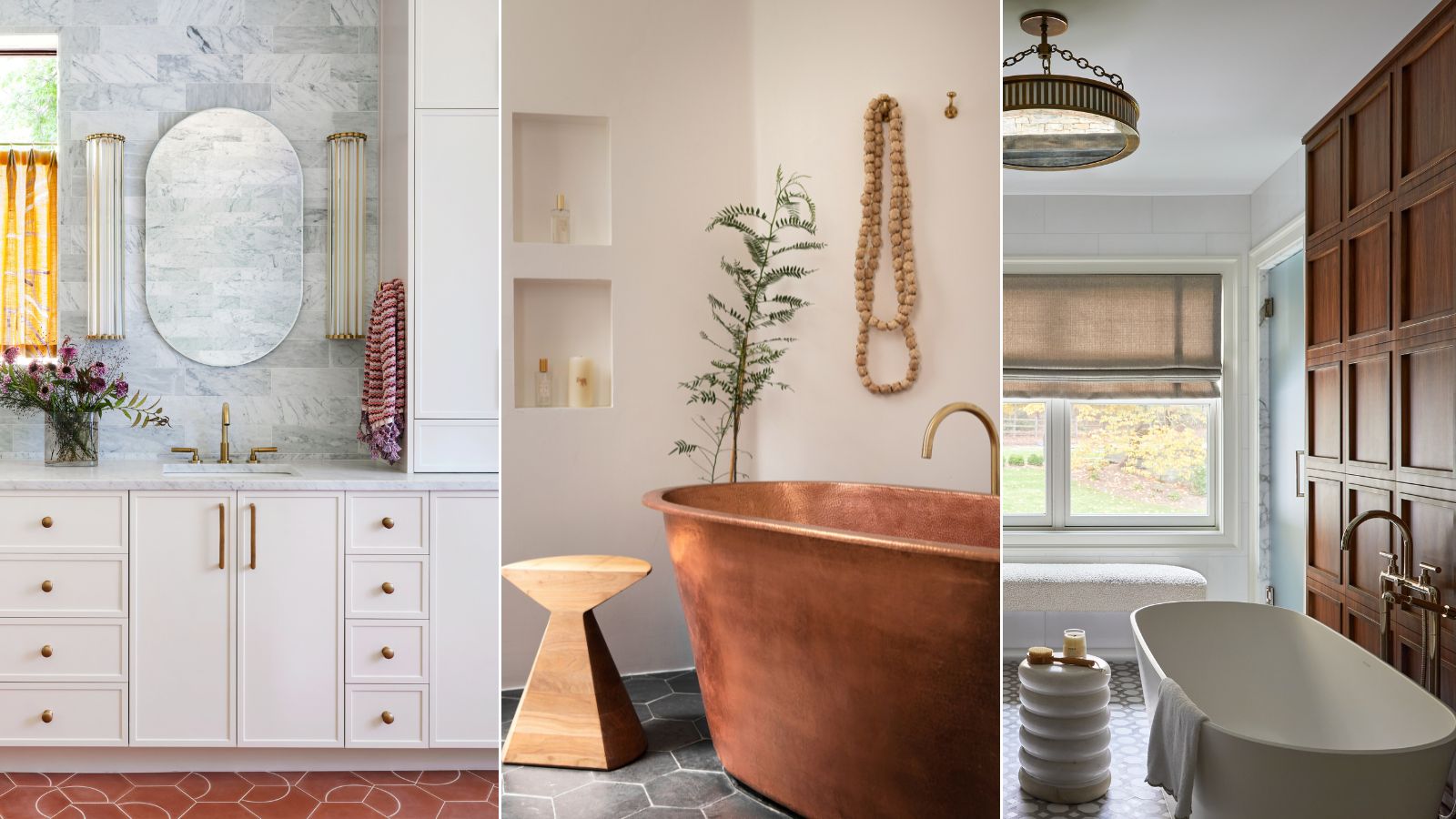
Is it time for a bathroom edit? With that in mind, what are the things interior designers say you don't need in your bathroom?
It's the classic interior design conundrum: while our bathroom ideas might be chasing the dream of a sanctuary-style bathroom, the reality is often quite different. Day-to-day family life can take its toll and before you know it the bathroom can start to look tired, cluttered, untidy, and sometimes a little less fresh than we might like.
10 things interior designers say you don't need in your bathroom?
As fashions come and go our bathroom trends have changed and if you haven't refreshed your bathroom for a while there may be a few elements that really no longer have a place in there.
The interior designers we spoke to say there are 10 things you don't need in your bathroom. Check out their advice below for the things we should no longer be putting in our bathrooms, plus their suggestions for what to do instead. Some of these are easy bathroom updates with no need to replace the main fixtures, others may require a little work, but all are guaranteed to get you closer to luxury bathroom perfection.
1. Corner baths or spa bath tubs
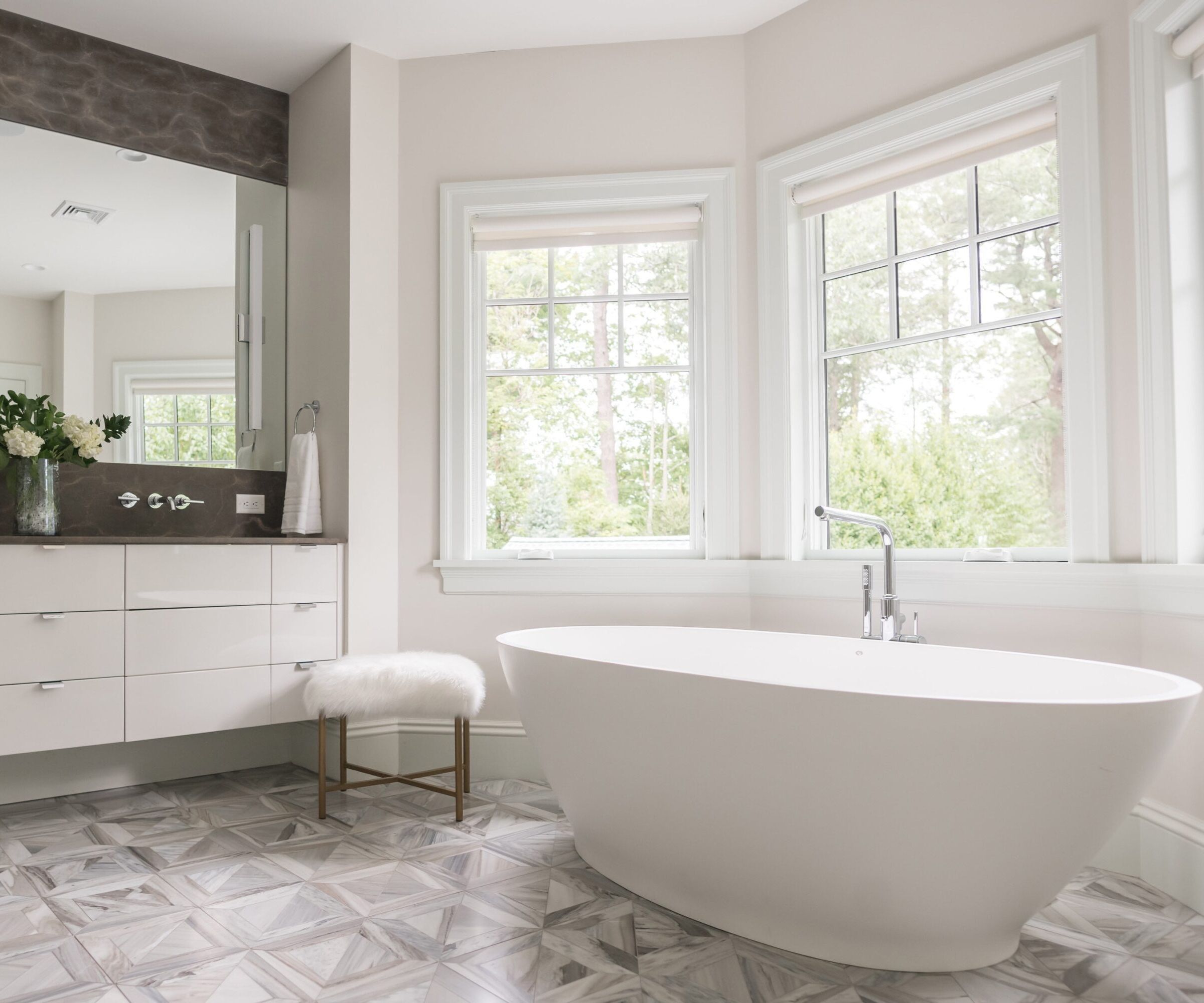
Back in the 80s and 90s, it seemed that bigger was always better. Outsize tubs, and statement corner baths or jacuzzi spa baths were considered the absolute pinnacle of luxury.
Times change, however, and we couldn't agree more with Florida-based interior designer Nicole Roe, of R. Nickson Interiors, who says 'When it comes to creating a functional and clean bathroom, less is often more. Excessively large, built-in bathtubs with high, hard-to-clean rims have become less popular due to their impracticality.'
'These bulky tubs often took up valuable square footage, especially in corner spaces, making the bathroom feel cramped and less functional.' Nicole suggests seeking out more modern alternatives, which score higher on both style and efficiency – just think of the energy wasted heating the water for these monster tubs!
'Statement undermount bathtubs with sleek stone tops or freestanding bathtubs offer a visually pleasing, streamlined look that enhances the sense of space,' says Nicole. 'They not only take up less room but also make cleaning much easier due to their simplified design and accessibility.'
2. Open storage
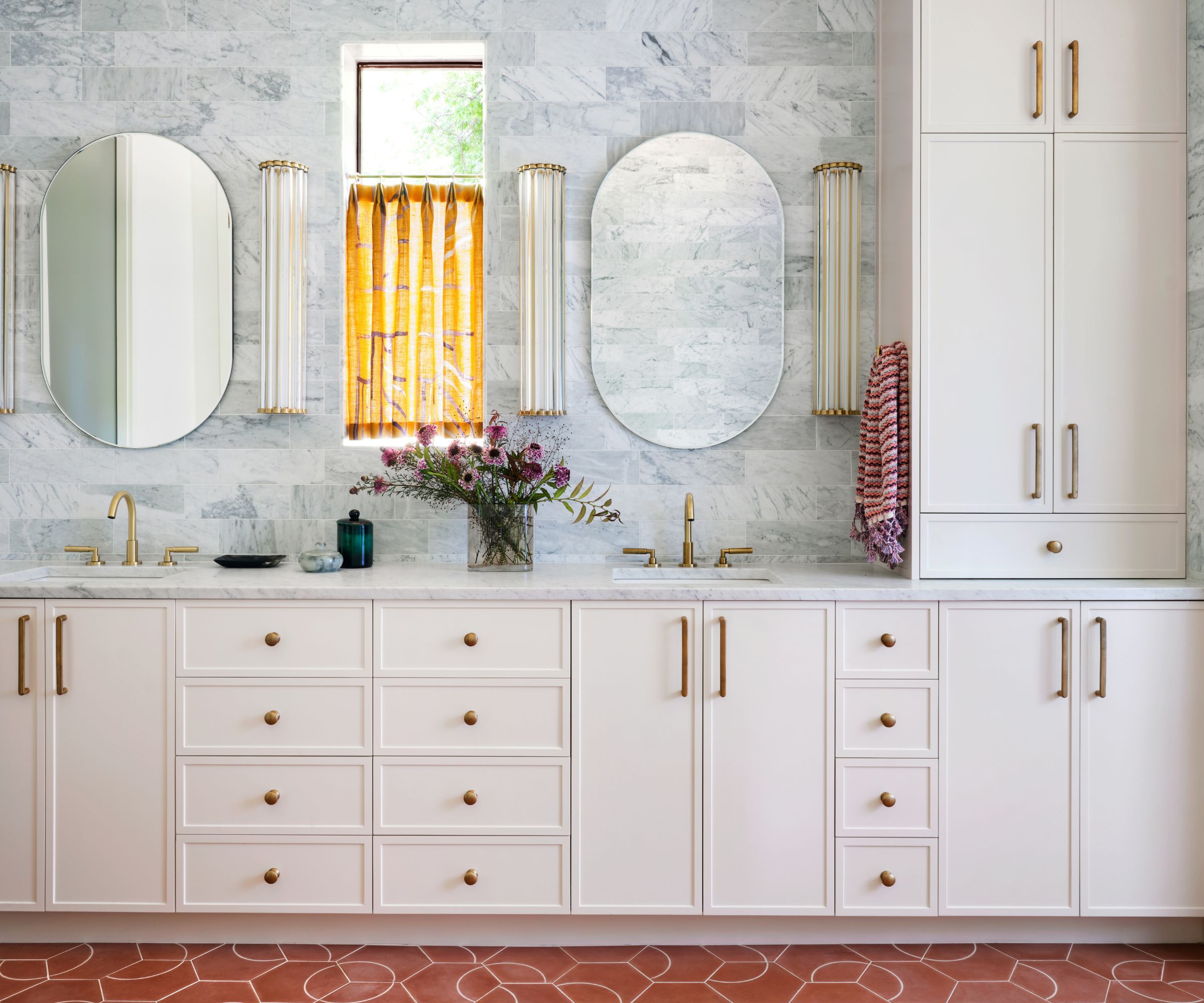
Now, we often extol the virtues of open shelving in kitchens, and we love a good display shelf with decorative objects but, for some of our designers, open storage in a bathroom is problematic.
'Open storage may look stylish,' says Nicole Roe, 'But it often leads to a messy display of toiletries and towels that are better kept out of sight. Excessive toiletries can also contribute to countertop clutter, with half-used products taking up valuable space.'
'Instead, opt for built-in cabinets or sleek vanities with ample bathroom storage options. Accessible storage is crucial for maintaining an organized and clutter-free space, but avoid open storage,' adds Nicole.
And while we're on the subject of bathroom storage, Austin-based designer Annie Downing, who designed the extensive bathroom cabinetry and double vanity pictured above, has a piece of very sage advice. 'Cabinetry over a toilet, aka head knockers, is a no-no,' she says. 'They feel claustrophobic. If you can inset cabinetry and make the doors flush, that would be really special.'
3. Carpets
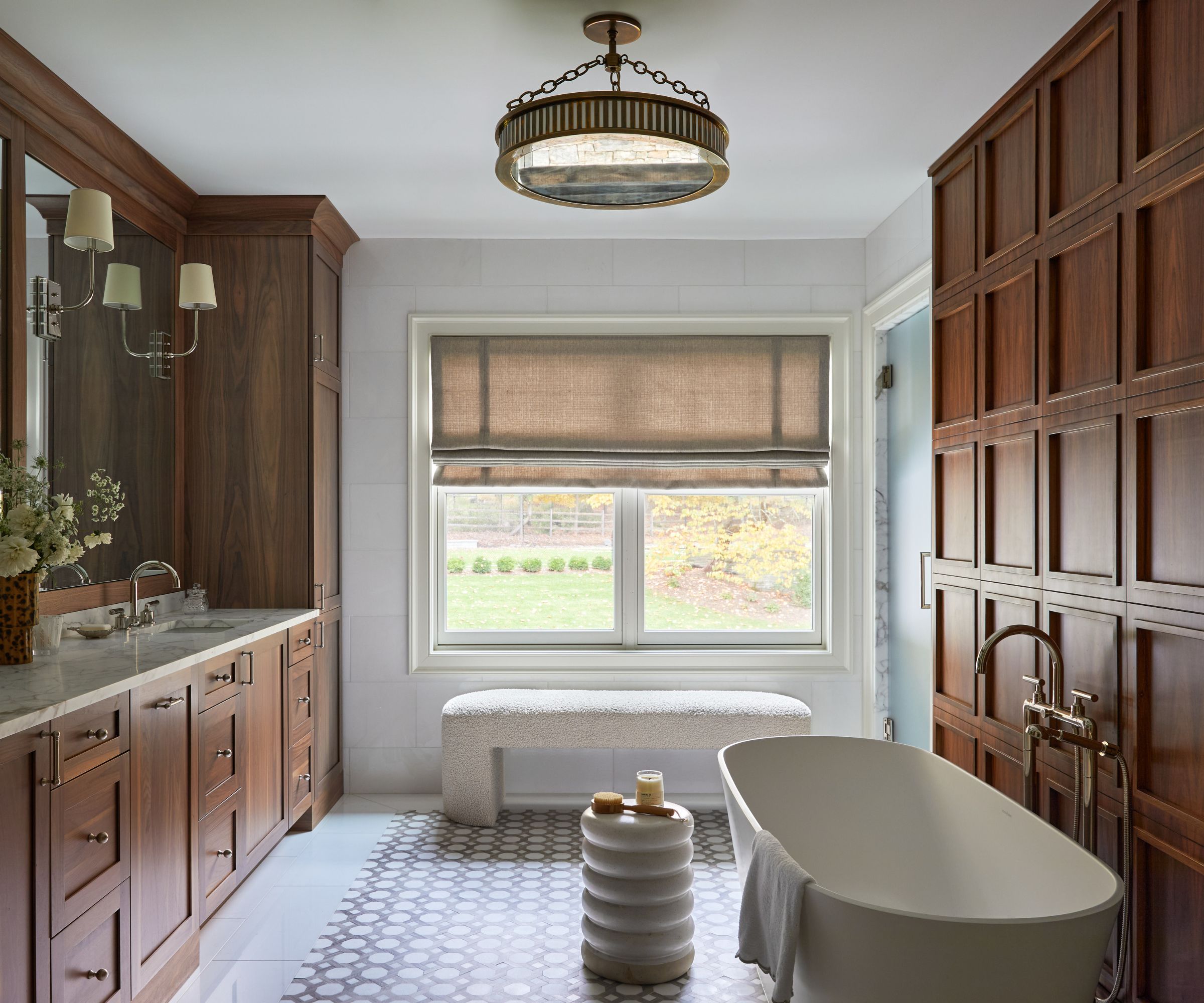
Squeamish readers should look away now, but there's no place for fitted carpets in a bathroom, and for the design experts this is non-negotiable.
Obvious hygiene issues make carpet a bad choice for bathroom flooring, particularly around the toilet but, noxious splashes aside, having full-size carpet in a bathroom risks other problems.
'While comfortable underfoot, carpets are not ideal for a wet environment,' adds Nicole Roe. 'They can trap moisture and bacteria, leading to unpleasant odors and potential health hazards. Additionally, water can easily seep underneath carpets, where it may hide old water damage and promote mold growth that can be difficult to detect and address.'
So if fitted carpet is a no-no for a bathroom, how about a rug instead? We should actually exercise caution with rugs, too, warns designer Kylie K Bass of NYC firm KKB Interiors. 'While a decorative rug can be beautiful and add warmth, it may not be the best choice for a small bathroom where moisture and frequent use could quickly damage it,’ she says.
4. Wall-mounted towel warmers
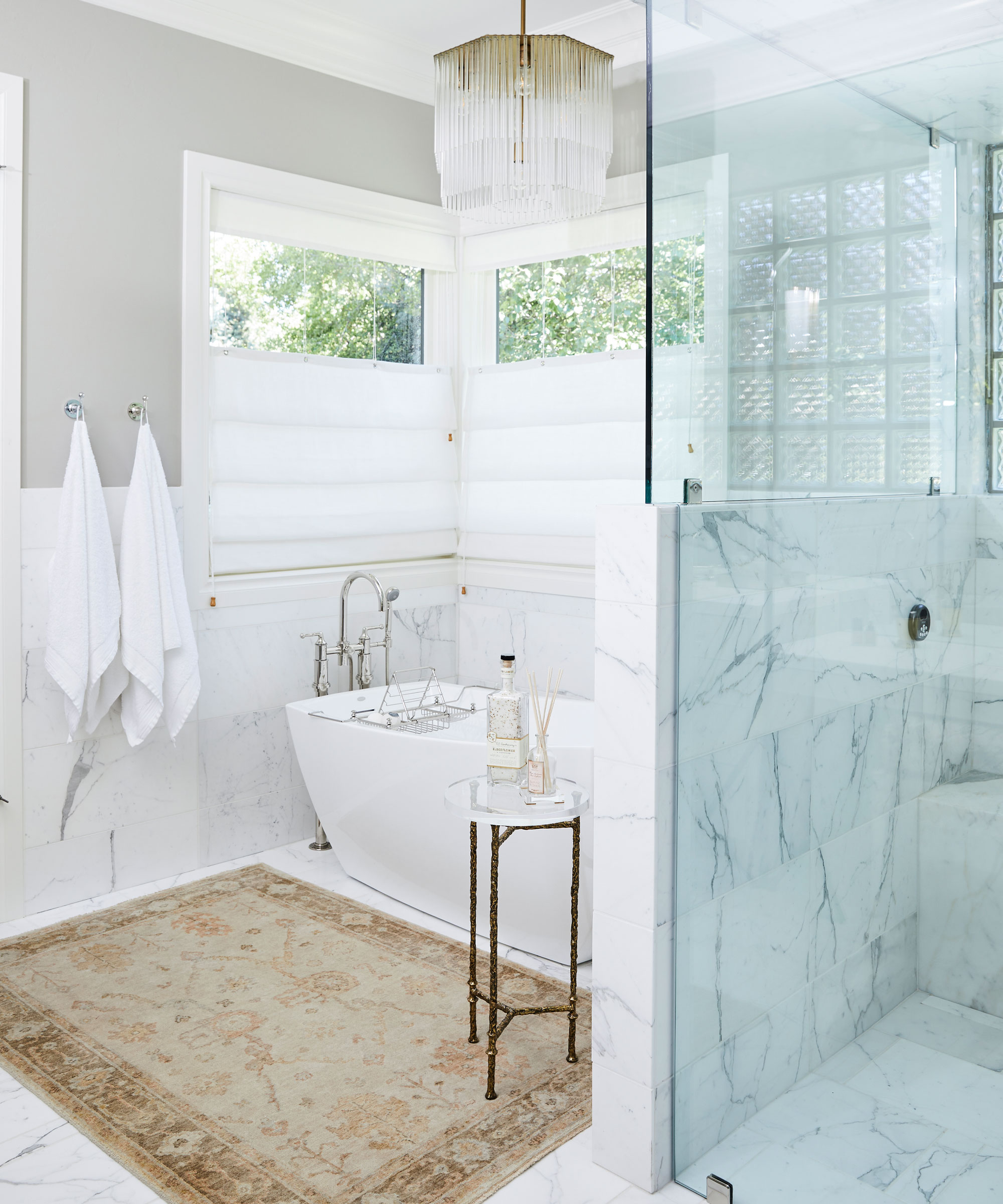
Wall-mounted towel warmers and towel bars have had their day, according to two of our design experts. 'Don't waste energy and wall space fitting heated towel bars,' urges Annie Downing, 'they were exciting for a bit, but we find that they can be finicky. Skip! Add hooks instead! They are easier to place and nowadays towels come with little fabric tabs to easily hang them.'
Designer Alice Lane opts for towel hooks rather than towel bars in her spec for the compact but luxurious bathroom pictured above. Nicole Roe, too, is ready to ditch towel bars. 'While once a luxury item, wall-mounted towel warmers, are now seen as less practical compared to portable models,' she says. 'Portable towel warmers are often more efficient, easy to use, and can be moved to different areas of the bathroom as needed, particularly during colder months.'
A more luxurious option to wall-mounted towel warmers and radiators is to include underfloor heating across the space. This will help to dry and warm towels in cooler weather.
5. Hollywood-style lighting
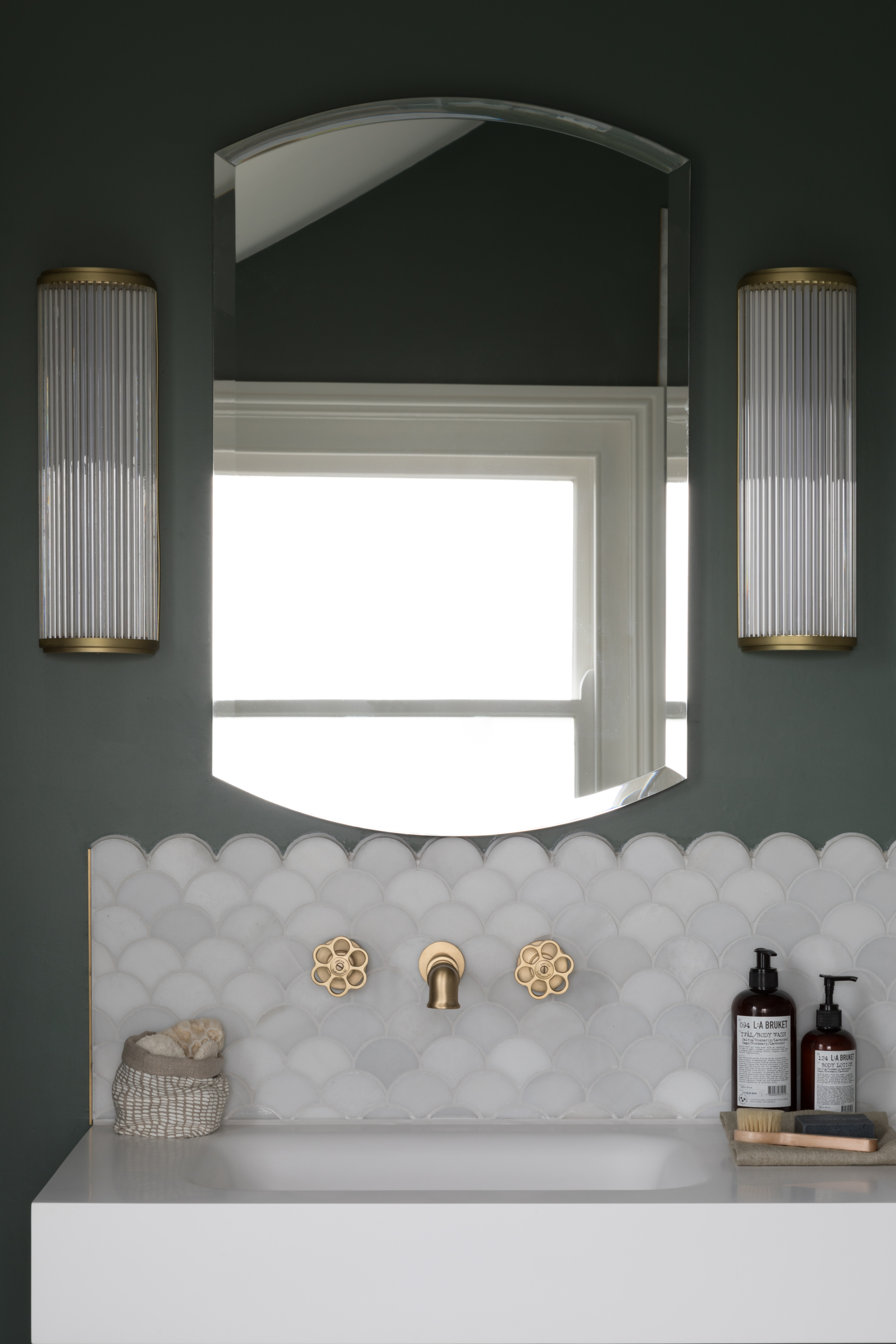
Make your bathroom a space for self-care and pampering but leave the diva factor out of it. 'Hollywood style lighting now looks very outdated,' says Annie Downing. 'Natural, flattering lighting is important in a bathroom but think decoratively.'
'A large mirror with dimmable lighting at face level is essential for creating a versatile ambiance and ensuring that tasks like shaving or applying makeup are well-lit without being harsh,' adds Nicole Roe.
Wall sconces are a good alternative in this case, and with so many stunning designs around these days, from Art Deco styles to sleek contemporary options, they can play their part in enhancing the decor as well as providing practical task lighting.
6. Heavy curtains or drapery
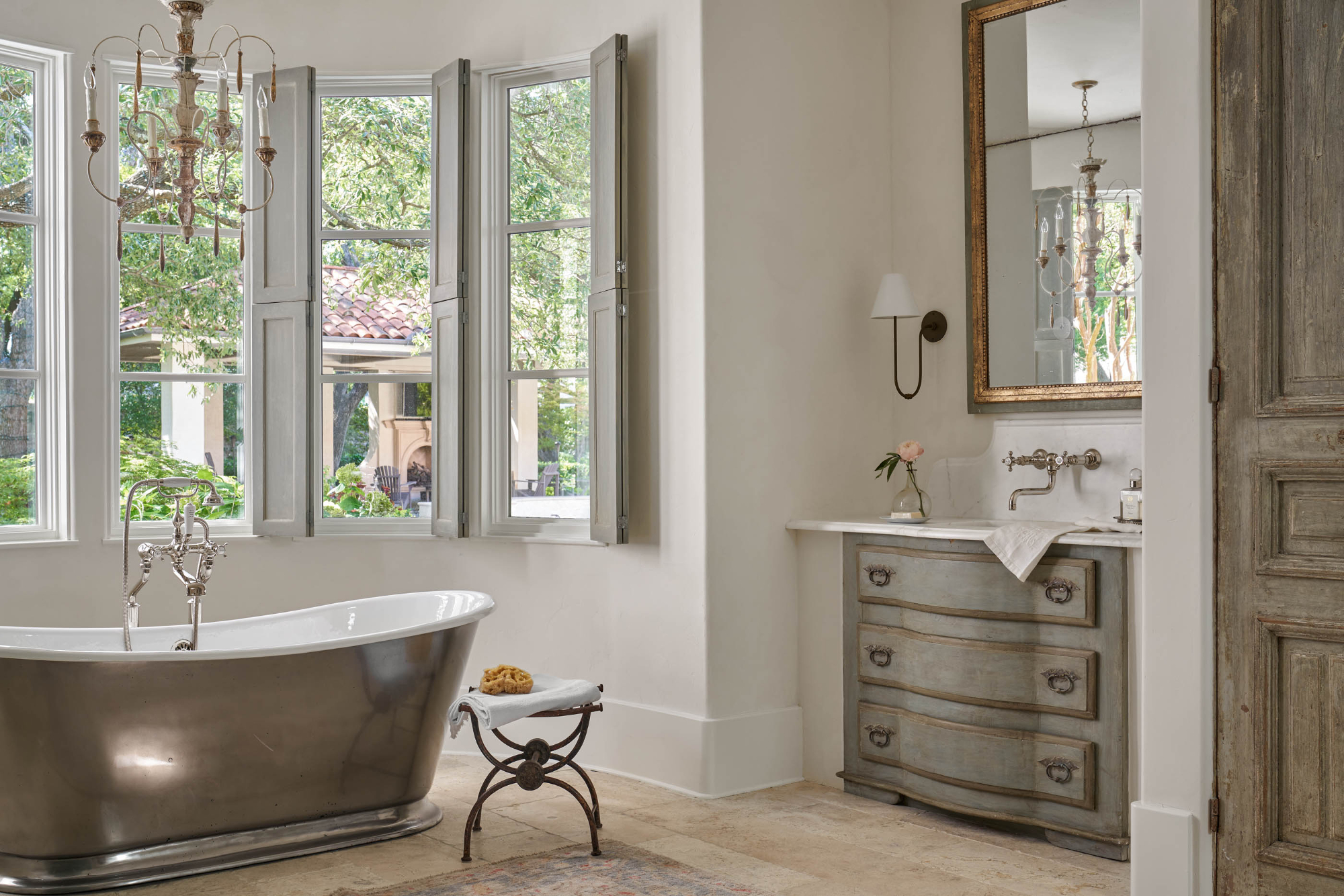
Thick drapes are almost as problematic as carpets in a bathroom. Like carpets, they soak up condensation and can soon show signs of damage. 'Opting for heavy curtains or drapery might seem like a way to add luxury,' says Nicole Roe, 'But in a bathroom, they create the perfect environment for mold.'
Shower curtains too, will deteriorate if they aren't allowed to dry out after use, so where possible use a solid or folding shower screen.
Fabric of all kinds, even in simpler blinds, is susceptible to water damage, so if the bathroom window lends itself to Venetian blinds or internal shutters these will be more practical and durable alternatives.
For Texas-based interior designer Kristin Mullen, the European-inspired shutters were the perfect complement to the bathroom. 'The shutters can be left wholly open, or the lowers can close for privacy,' says Kristin.
7. Laundry hampers and drying racks
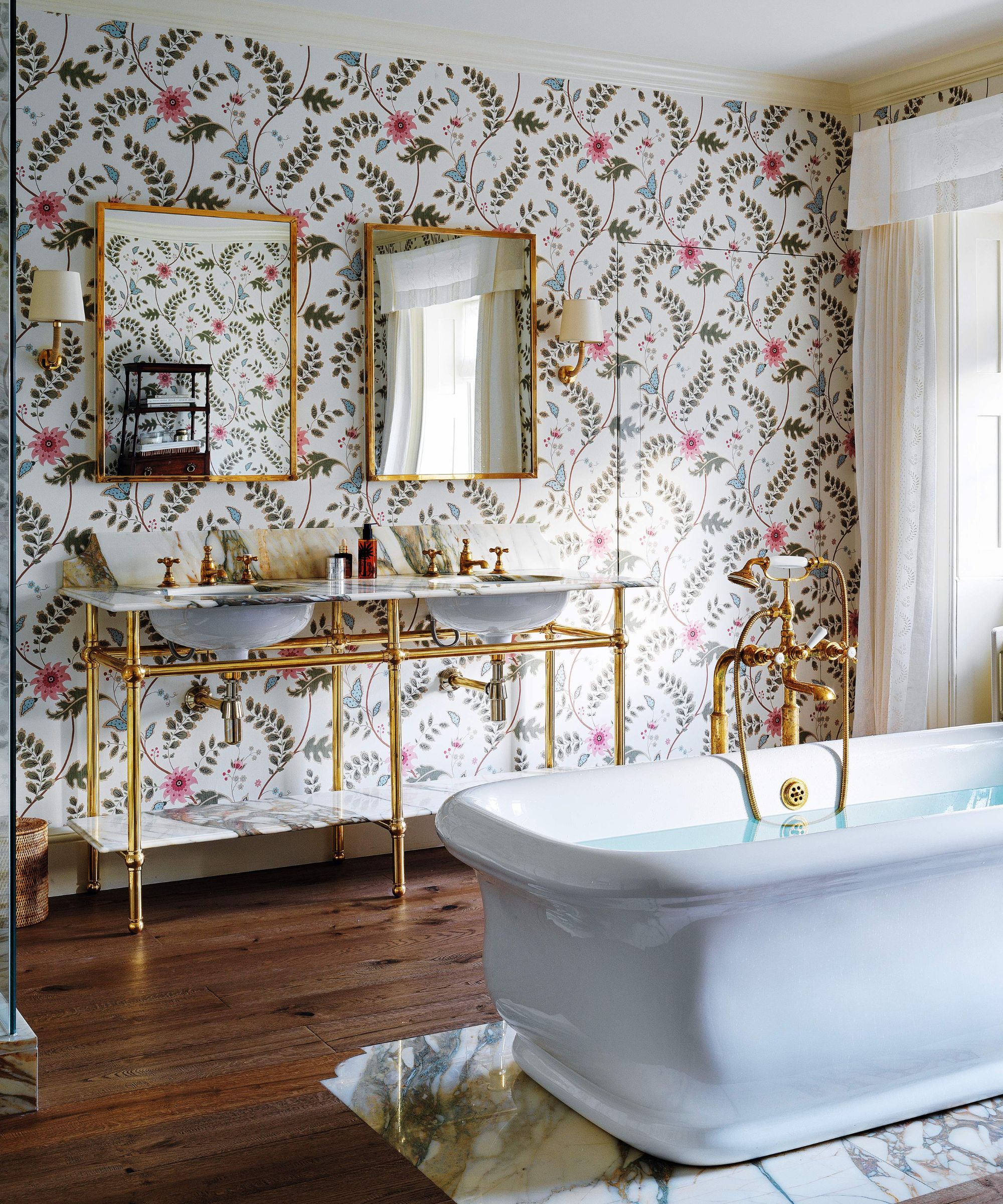
For all we can understand the practicalities of having a laundry hamper to hand in the bathroom, if you're trying to create a serene space for relaxing soaks and refreshing showers, dirty clothes are best collected and concealed in a built-in cabinet, or removed from the bathroom altogether and placed in the laundry. As for drying racks, these definitely belong in the laundry.
Erica James, founder of Erica James Design agrees: 'Try and keep the space as clutter-free as possible in order to create that real hotel feel' she says. 'Large laundry hampers, and clothing drying racks have no place.'
8. Old towels and bath mats
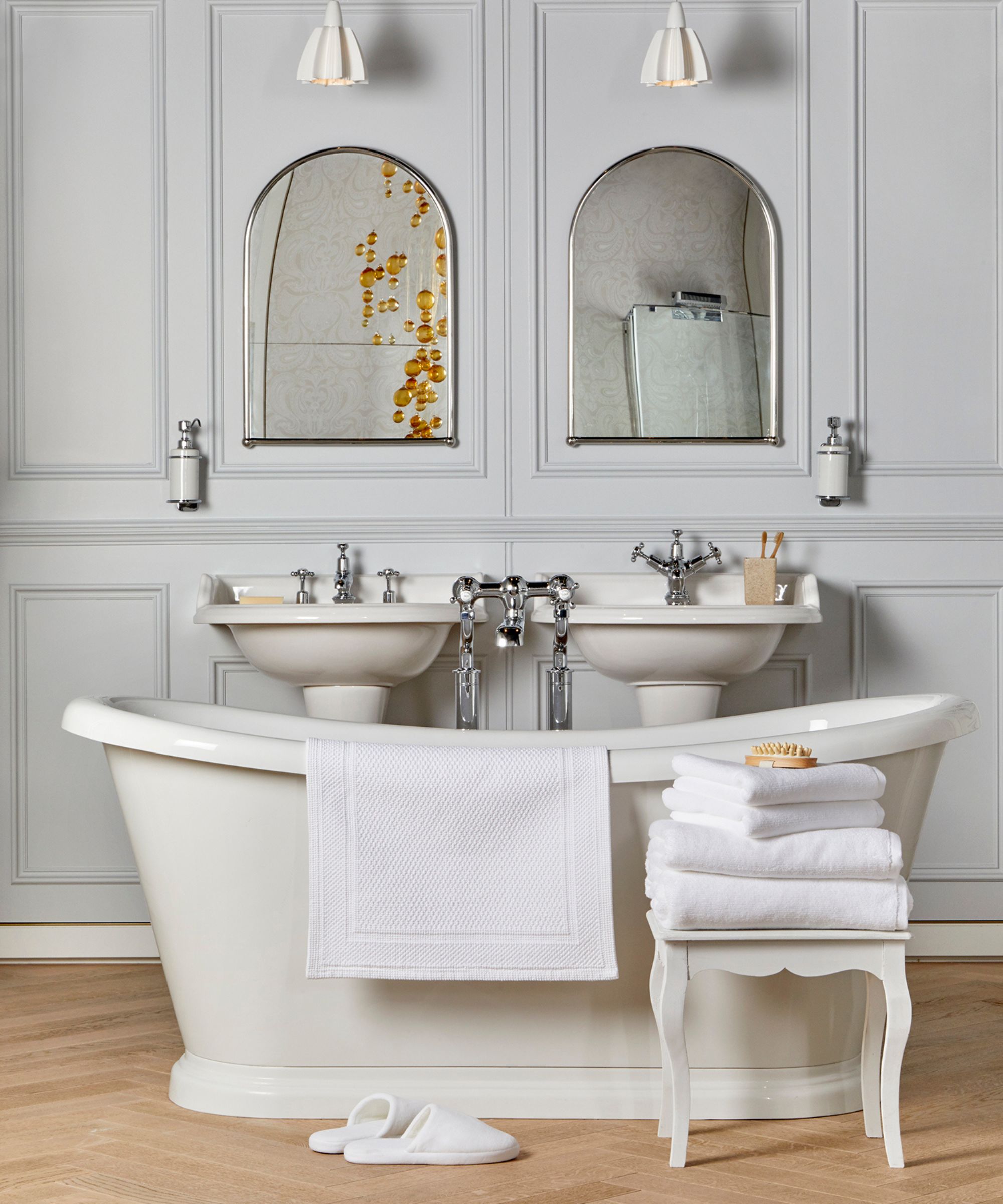
We discard and replace our worn-out clothing, so why hang onto old towels and bath mats? There's no pleasure in wrapping oneself in a scrubby, washed out towel after a bath and stepping onto a bath mat that's seen better days.
'Old towels and bath mats not only lose their absorbency but can also harbor bacteria and mildew if they don’t dry properly,' adds Nicole Roe. Invest in good quality towels and bath mats, wash and dry them regularly and thoroughly, and replace them as soon as they show signs of wear.
9. Faux plants
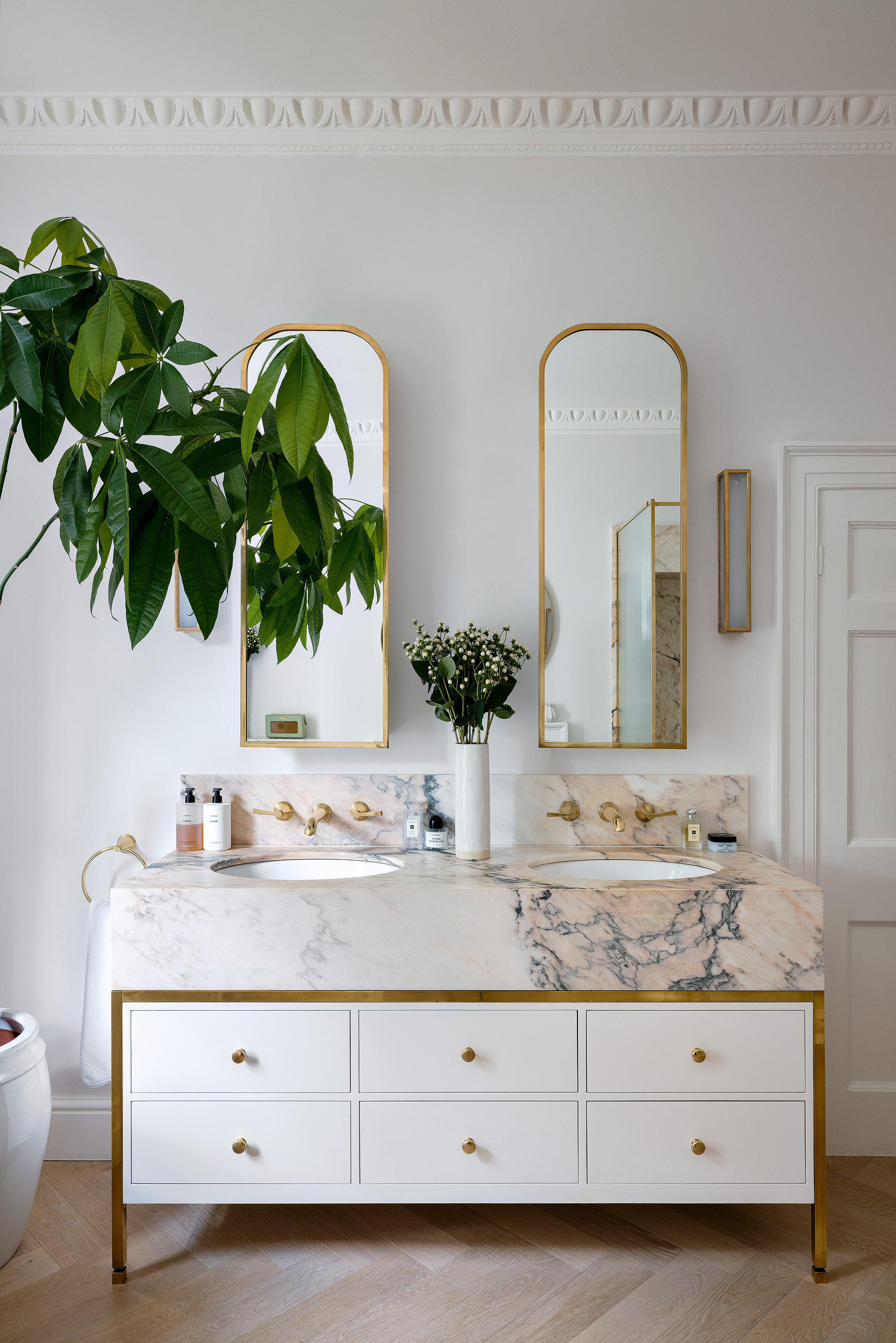
There's no shortage of information about the benefits of growing indoor plants, and a bathroom is an excellent place for a bit of lush greenery, particularly since some plants will help absorb moisture and purify the air. Before you invest in new bathroom plants, make sure they are varieties that will thrive in the room's humid environment.
Don't, adds Nicole Roe, be tempted by faux plants. 'They often seem like an easy way to add a touch of greenery but can quickly gather dust and lose their visual appeal, making them a less practical choice for a bathroom,' she says.
Living plants will gather dust too, of course, if you don't wipe or spritz the leaves and you can always give them a quick spray in a cold shower from time to time.
10. Too many toiletries
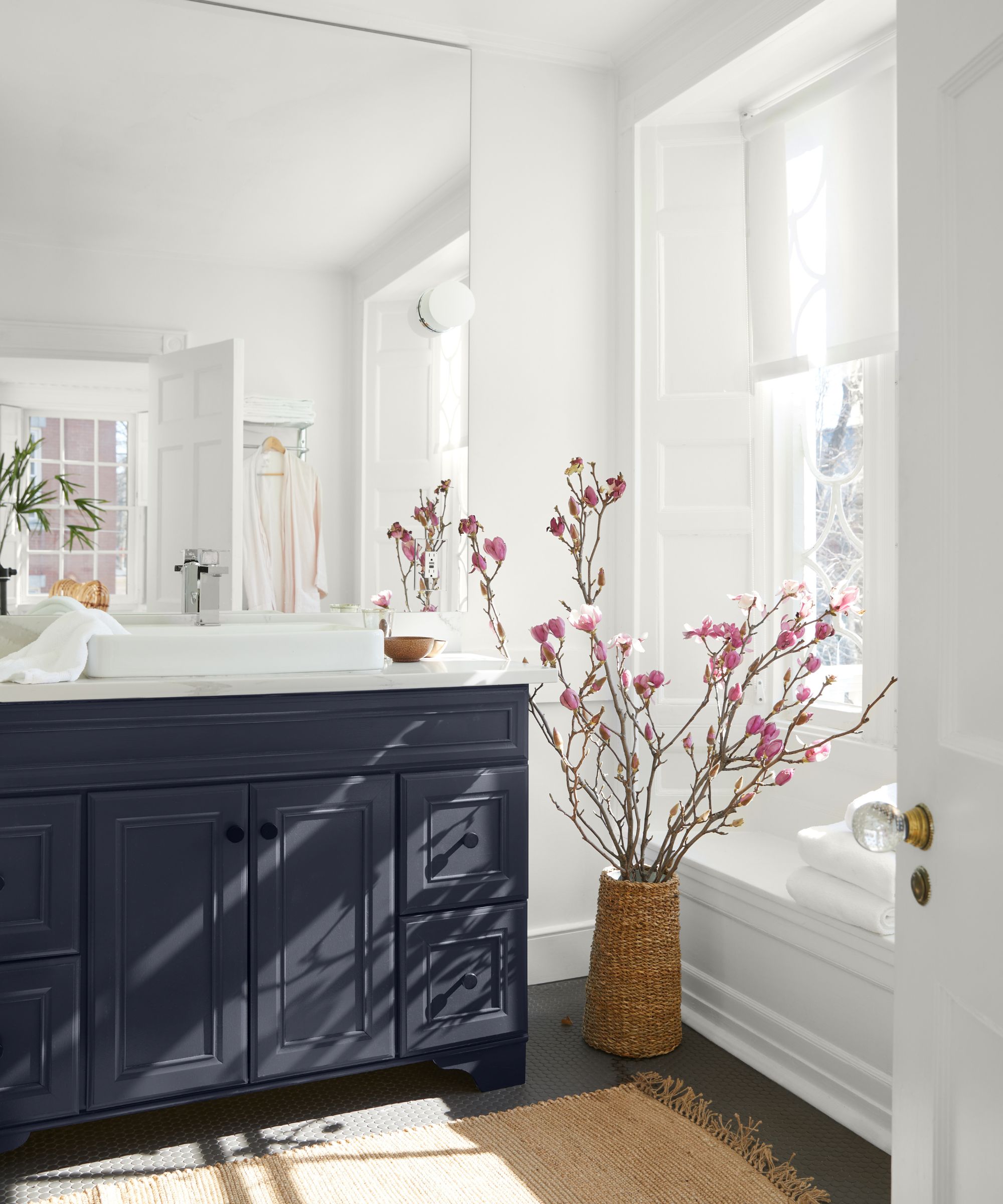
It's easy to let toiletries get out of hand in a bathroom. Cosmetics and toiletries have a shelf life so do a regular sort of the almost-empties, rinse and recycle them and keep their replacements tidy, preferably in a bathroom cupboard or drawer where they won't create untidy clutter.
Funnily enough, toiletries and cosmetics clutter is one area of bathroom etiquette that gets the experts really steamed up. Designer Kylie K. Bass says 'One of my pet peeves is exposed or acrylic cotton ball and q-tip holders! I like them to be concealed in a pretty container if they need to be on the counter.'
Meanwhile, Annie Downing says she finds overly specific containers and organizers fussy and unnecessary, preferring natural materials and textures that add something to the space. And Erica James puts toothbrush holders and tissue holders on her not-needed list.







